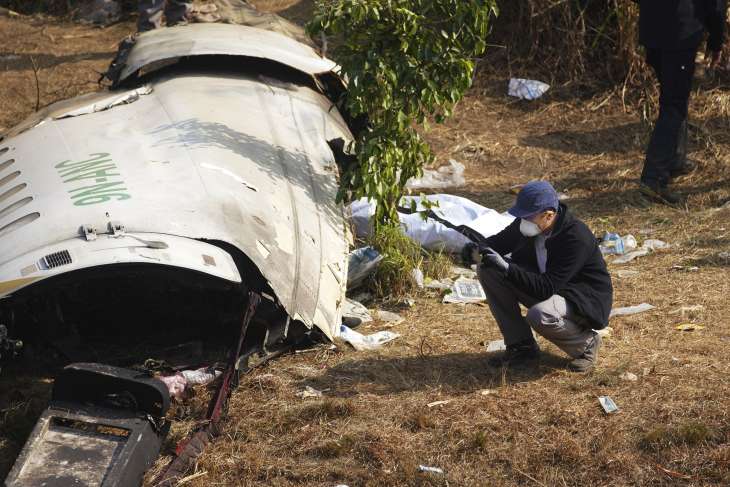
Nepal plane crash: The pilot of the Yeti Airlines plane that crashed in Nepal’s resort city of Pokhara may have failed to fully deploy the wing flaps while attempting a landing, a media report said on Thursday. According to aviation.govt.nz, “stall” is the breaking of the smooth flow of air over the wing into a turbulent flow, resulting in a reduction in lift. The lift would no longer fully support the weight of the airplane, and the airplane would sink.
Notably, the report comes nearly four days after a Yeti Airlines plane crashed near the newly-built airport in Pokhara. The fatal crash killed all 72 people on board, including five Indians, in the country’s worst air disaster in 30 years.
According to a report in the Kathmandu Post, the exact cause of the crash will be known only after examination of the flight data recorder or black box.
A French team is also probing the accident: Yeti Airlines
According to a Yeti Airlines official, a nine-member team from France is also interrogating the airline’s staff and concerned officials in Pokhara to understand the details of the ATR-72 plane crash.
Significantly, the plane that took off from Kathmandu at 10:30 am crashed into the gorge of the Seti River, killing all four crew members and 68 passengers. One person on the plane is still missing.
The government has constituted a five-member inquiry committee to investigate the accident. Two mobile videos went viral soon after the accident. One showed the aircraft veering sharply to the left and then plunging behind a stall, while a second video appeared online several hours after the incident and showed an Indian passenger identified as Sonu Jaiswal who died before the plane went down. Was streaming live a few seconds back.
Watch the viral video here:
The report said footage showed the flaps were not fully down, leading experts to suspect the plane may have stalled for this reason.
Several pilots have claimed human error behind the crash.
The Kathmandu Post quoted Kumar Pandey, another senior ATR captain, as saying, “I was stunned after watching the video.”
“From the window, we can clearly see that a portion of the wing flaps of the aircraft were not fully deployed. I am speaking on the basis of video footage, which is being examined in detail.”
The report says that in 2007-08, Pandey flew the same aircraft that belonged to the now-defunct Kingfisher Airlines of India.
“It looks like the pilots messed up. If so, then it is gross negligence. They did not follow the basic checklist.
Important Checklist for Landing
Referring to the landing checklist, the co-pilot normally reports that the aircraft has descended to 1,000 feet, the level at which the aircraft should be completely stable for landing, according to the report. Normally at 160 knots or 296 kilometers per hour, the pilot releases the landing gear. At this stage the flaps should be deployed at 15 degrees.
When the speed drops below 150 knots or 277 kilometers per hour, the flaps should be set to 30 degrees. This process stabilizes the aircraft for a smooth landing. The pilots then align the aircraft with the runway. To reduce speed in this phase the flaps should be set at 30 degrees.
“But the video shows flaps at 15 degrees,” Pandey said. According to them, extending the flaps especially beyond 30 degrees results in significant levels of drag. When a steep approach angle and a short final come together, landing becomes critical, which may have been the case with Yeti Airlines Flight 961.
“Pilots may have omitted the mandatory final landing checklist,” said the report, citing at least four ATR captains and at least three experts with extensive knowledge of the matter.
What Indian pilots say about the crash
Meanwhile, aviation experts in India said on Sunday that the cause of the plane crash in Nepal could include aircraft system malfunction or pilot fatigue.
A pilot of a regional carrier who has been flying ATR planes for nearly two decades said on condition of anonymity that the particular aircraft may have stalled or there could be some pilot error.
The pilot said that the cause of the accident would be known only after the completion of the investigation.
(With inputs from PTI)